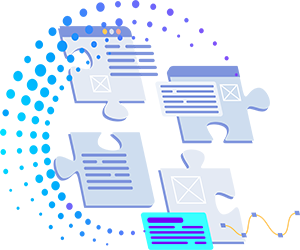Why Integrate Hundreds of Wearables Through a Single API?
The integration of health devices and wearables is quickly becoming a crucial aspect for companies looking to offer personalized, data-driven health solutions. With thousands of wearable devices available on the market, the need to consolidate data into a single platform has become essential for businesses in healthcare, fitness, and wellness.
Managing multiple SDKs (Software Development Kits) and individual device APIs can be overwhelming, costly, and time-consuming. Fortunately, platforms like ROOK are making this process easier by allowing companies to integrate hundreds of wearable devices with just one API.
In this article, we’ll explore how data from multiple wearables can be consolidated efficiently, without the need to manage numerous SDKs, and how this benefits health and wellness companies.
The Challenge of Integrating Multiple Health Devices
As wearables have become more popular, the market has seen a significant increase in the number of devices and platforms available. Each of these devices comes with its own SDK, documentation, and technical requirements, making it a long and costly process to integrate them into a single platform.
Some of the main challenges of integrating multiple wearables include:
Data variability: Each device may have its own data format and sampling frequency, making standardization a challenge.
Continuous maintenance: Devices and their SDKs are constantly updated, which requires ongoing monitoring and maintenance to avoid compatibility issues.
High costs: Managing several individual integrations can be costly in terms of time and resources. Companies need to hire specialized technical teams to maintain these integrations.
Interoperability complexity: The ability to integrate data from different platforms may be affected by interoperability issues, making it difficult to unify data into a single system.
The Solution: Integration Through a Single API
An efficient solution to these problems is integration through a single API that manages multiple devices in a centralized manner. Platforms like ROOK simplify this process by providing an API that connects with over 300 wearable devices, eliminating the need to manage multiple SDKs and making data integration straightforward.
Benefits of Integrating Wearables Through a Single API
Data centralization: By using a single API, companies can consolidate data from multiple devices into a single workflow. This simplifies data management and analysis, providing a clearer and more complete view of users' health.
Time and resource savings: Integration through a single API significantly reduces development time, avoiding the need for companies to manage several complex integrations. This allows for faster implementation of health solutions.
Data standardization: A centralized API handles the normalization of data from various devices, ensuring that the information is structured consistently, regardless of the device’s origin.
Scalability: A single API facilitates scalability, allowing businesses to easily expand their operations without worrying about adding and managing new integrations. This is especially useful for companies planning to expand or add new devices in the future.
Regulatory compliance: Platforms offering integrations through APIs often comply with privacy and security regulations, such as HIPAA or GDPR, ensuring that user data is handled securely and in accordance with data protection laws.
Conclusion
Integrating hundreds of wearable devices through a single API offers multiple benefits for businesses looking to leverage real-time health data. By eliminating the need to manage multiple SDKs, platforms like ROOK provide an efficient and scalable solution that allows companies to focus on what truly matters: offering personalized, data-driven health solutions.




